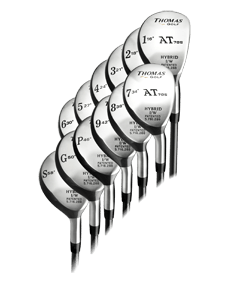In this video tip PGA golf professionals Pete Styles and Matt Fryer will start by explaining the reasons why many golfers duff their short shots, and explain how detrimental this can be not only to your golf scores but also to your psychology and mental approach. Once we establish how detrimental the duff shot can be, it is now time to set about creating a more positive set up and impact position. This will reduce the number of duff shots and create a more consistent ball striking approach. A simple drill of positioning your shirt buttons ahead of your golf ball at set up and maintaining this position could be the secret that you are looking for and banish those duff shots forever.
So there's nothing more frustrating sometimes I see on the golf courses after hitting that fantastic drive straight down the middle your left with a bit of a delicate pitch into a pin and all of a sudden we get this one. Oh dear we've taken a lot of earth and we've duffed it and we've got to go and have another one which is probably going to leave the fear of God in us as we go to play the next one. So Pete you're going to give us something that's going to help us make the most of our good drives and hopefully hit better pitches and start scoring better. So the problem with that pitch shot there is it might of looked like it went up in the air but it went no where as near as far as I wanted it and chances are it plugs itself in the front bunker and it sets off a chain reaction. I like you said that as well it puts the fear in us because once you hit one bad pitch shot it kind of spiraled into more of the same, but one of the issues here is that the default setting for a lot of golfers is trying to help the ball, and you know what I tried to do that I was on my back foot I was scooping and flicking trying to lift the ball up and that's simply not the right thing to be doing with the club will do that thing for us Matt.
We don't need to help it we just need to deliver the club down with a loft on the club, yeah exactly so we're looking for a contact where we're getting what ball first and then a bit of turf. That was predominately turf and then a bit of ball and that is a valid point we don't mind hitting the divot I don't want to sort of thing that hitting the ground is a bad thing hitting the ground is a fine thing as long as it's after the golf ball. Now to get something to be after the ball allowing you to consider that you'll generally strike the ground underneath your body weight. If I set myself to facing this camera right here and I make my little swing and you can kind of see where I'm hitting the ground just trying to leave my body weight back that starts to go a lot further back. Yeah it is outside your trail foot there as you did that, and if I start to move my body weight forward I'm starting to hit the ground a lot more forward that simply by changing my body weight position I can actually change my low points in my striking location. Excellent and we know when we're hitting a wedge shot we want to strike locations to be after the golf ball so that's where we need to get the body weight after the golf ball. The simplest way of doing that is thin about the zipper the buttons the centerline your chest should be in front of the golf ball at address. So as I set up for this golf ball here I take my centerline around my body got my ball position nicely in the center of my body and I've got my center line pinned to my zip here.
If I can move my body weight left I move my centerline left of the golf ball left the center my divot is now going to start from here but it doesn't take much luck for me to get into the wrong habit just little bit of lean back look where my centerline is now here the divot is here that's going to be the classic back shot. We understand that the correct change setup but also needs to stay there for impact as my point setting up here and then hitting from here Matt that would be a classic leaning back and trying to flick it setting here moving here and striking down. Exactly would you say you've got more weight in your lead foot as you go through that one you felt it's all 70 percent let's say as a rule you know generalization it's probably 60/40 set up and then 70, 80, 90 ready for impact you know really dry moving that left hand side. OK OK more I move that about a strike I get I've got a bad lie I'll probably even set the more on my left side. Fantastic so just moving there and trying to keep it out is going to help us get this control over the pitch shots so if you want to take your set up for us there, and were just going to say that you're going this way a little bit on. Yeah well there was chest is forward body weight there and then if you are just to clip one off for us there now. Fantastic really nice striking much better contact even though if you just went back to set up for me and where you lean in we can see the divot is in the left side of your body now from the face on camera the divot size between the fat shot at the start and that one there the divot sizes were about the same Matt. That second one certainly felt nice liked those sounded good as well much better ball flight. So simplistic answer there for you guys if you want to get more control of your pitch shots and stop duffing those pitch shots what we've got to do is move our weight forwards towards our lead foot in our set up. We want to see we've got about 60 percent good Pete said you'll zip on your chest just in front of the golf ball and as we swing we're going to maintain and move in through a little bit more. From there we should see that we're starting to get more crisp contact with pitch shots and hitting more controlled and closer pitch shots.





